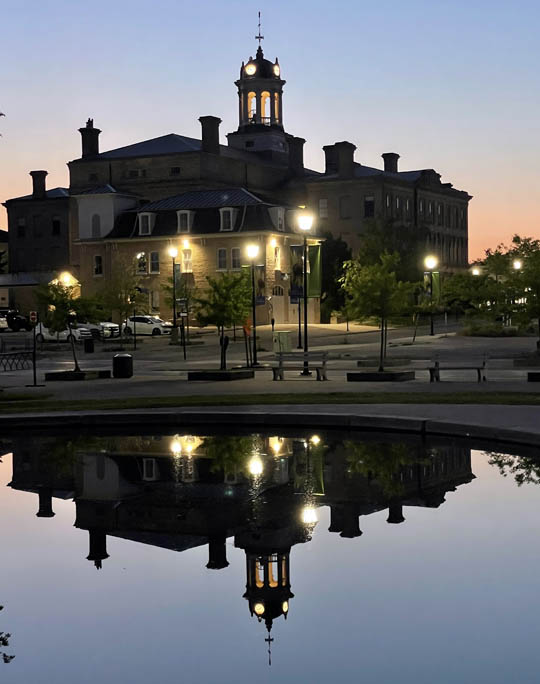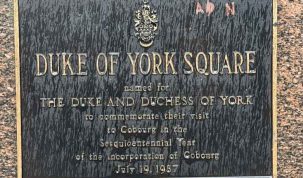Incentive based programs to address housing shortage and facilitate positive community change
The Town of Cobourg Planning and Development Division is eager to announce the intake for the 2022 Affordable and Rental Housing Community Improvement Plan (CIP).
The Affordable and Rental Housing CIP was developed in response to the rising need for both affordable and rental housing options within the Town of Cobourg and will help to execute the Northumberland County Affordable Housing Strategy (AHS). A CIP is a strategic policy tool that can provide a suite of incentives for homeowners, to address locally specific needs and priorities in the community, including the promotion of affordable and rental housing, as well as sustainable, accessible, and economic development.
To address Cobourg’s housing shortage, a priority has been set to increase the supply of purpose-built rental housing, smaller units, second units; such as accessory dwellings or coach houses, mixed-income developments, and emergency and transitional housing. The 2022 CIP application intake will apply to eligible, rental, affordable, and transitional housing proposals in the Town of Cobourg in accordance with the CIP Program Guidelines. Proposals may be submitted by:
• Non-profit and for-profit residential developers planning to build new affordable or rental housing dwelling units and/or transitional housing in Cobourg
• Non-profit and for-profit residential developers planning to convert non-residential buildings to new rental or affordable housing dwelling units and/or transitional housing in Cobourg
• Cobourg homeowners planning to add a secondary dwelling unit, to be rented out in their owner-occupied home
“Through the Affordable and Rental Housing CIP, the Town of Cobourg is able to provide practical incentives to address Cobourg’s housing shortage and improve our social and economic conditions,” says Councillor Nicole Beatty, Coordinator of Planning and Development Services. “In 2021, the CIP was successful in stimulating private sector investment into local rental and affordable housing. This year, we want to encourage Cobourg homeowners and property owners, who may co-benefit from the development of a secondary unit, to investigate how the CIP can support their development goals.”
The introduction of additional secondary units in the Town of Cobourg addresses the need for more housing options in our community while making homeownership more affordable for current homeowners. Additional rental units, such as basement apartments, attics, or coach houses, creates much needed attainable rental housing, while helping to offset the expense of a mortgage payment for the homeowner. Supporting first time homeowners, struggling to enter the market as well as current homeowners who wish to age in place.
The 2022 intake for the Affordable and Rental Housing program is available from July 15 to September 30, 2022. All those interested in learning more about the program can visit www.Cobourg.ca or call the Planning Department at 905-372-1005.
Purpose-Built Rental Housing:
Purpose-Built Rental housing is designed and built expressly as long-term rental accommodation. It is different from other types of rental units, such as condominiums for rent or secondary suites, which may be available in the rental pool one year and not the next. Purpose-built rental housing is the most secure form of rental housing available. Units may have market or affordable rent and cannot be used for short term or vacation rentals.
Smaller Units:
Smaller units typically include bachelor and 1-bedroom units that are between 300 and 800 square feet in size. Smaller units can assist in providing affordable housing as they tend to be less expensive than larger units. By providing a diversity of housing sizes, more people can find housing that meets their needs.
Second Units:
Second units (i.e. secondary suites, garden suites, accessory dwellings or coach houses) are self-contained living units within primary residences. Second units are a market driven solution to the unmet demand for affordable housing. They can offer affordable housing choices within the existing housing stock in established communities to assist both owners and tenants. The majority of second units are created through internal alterations, although some are built as additions to the main house or in/above ancillary structures like garages or separate coach houses. The size, type (e.g., internal, addition, ancillary structure), and location of the second unit will depend on the size and design of the house as well as its location on and the overall size of the lot.
Mixed-income Developments:
Mixed-income housing is a model for affordable housing that does not concentrate affordable housing in one particular building or area. It is intended to provide housing for people with diverse income classifications. The mix of affordable and market-rate units that make up mixed-income developments differs from community to community and depends partly on the local housing market and the marketability of the units themselves. Mixed-housing areas may include diverse types of housing, including apartments, single-family homes and town homes and may include mixed-tenure units (rental and ownership).
Emergency and Transitional Housing:
Emergency housing is short-term accommodation for people who are experiencing homelessness or are in crisis. Emergency housing facilities often provide necessities, such as a place to sleep, shower, do laundry, get clothing, and obtain meals and services.
Transitional housing refers to a supportive and temporary type of accommodation that is meant to bridge the gap from homelessness to permanent housing by offering structure, supervision, support, life skills, and in some cases, education, and training.






















